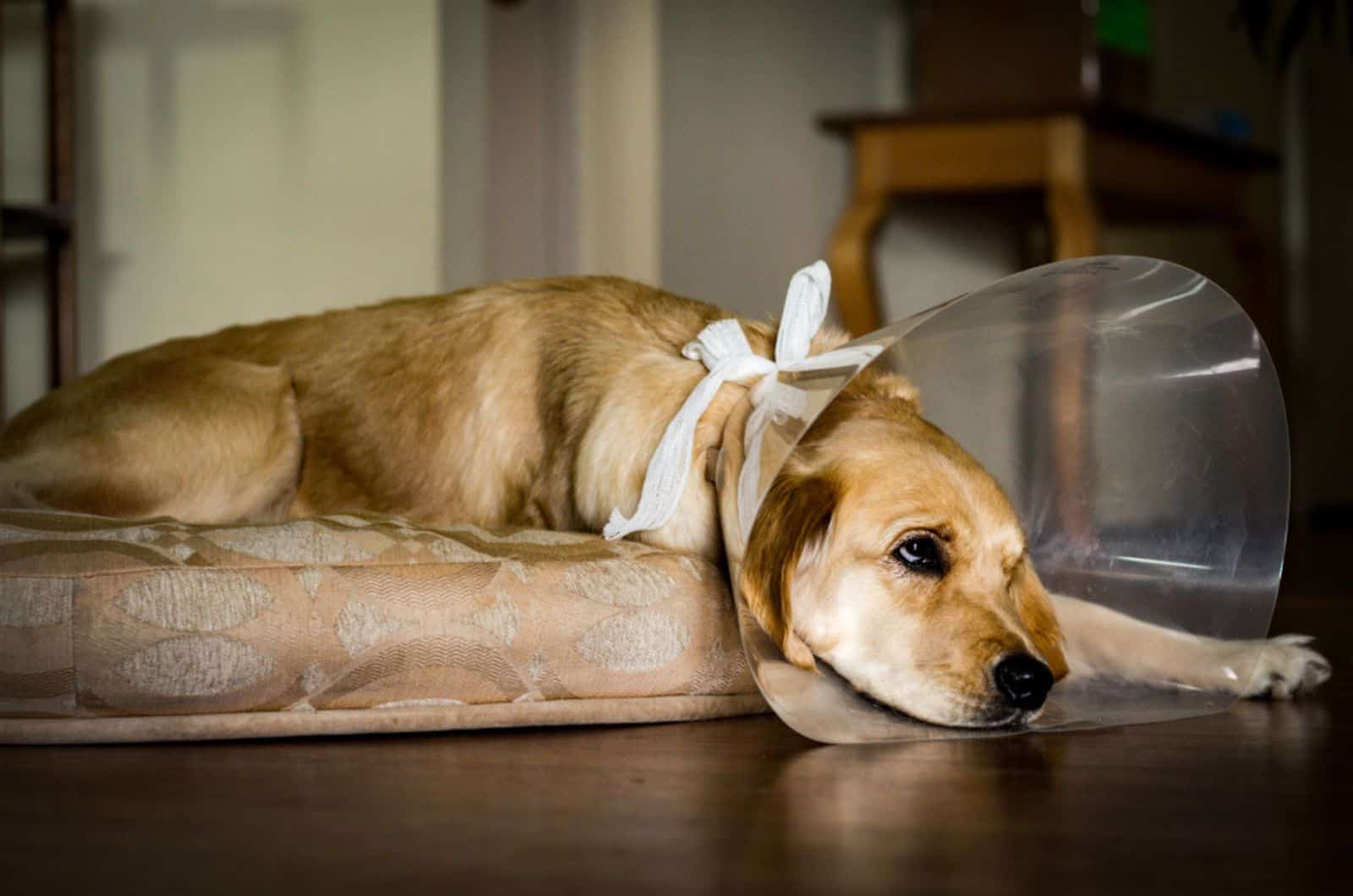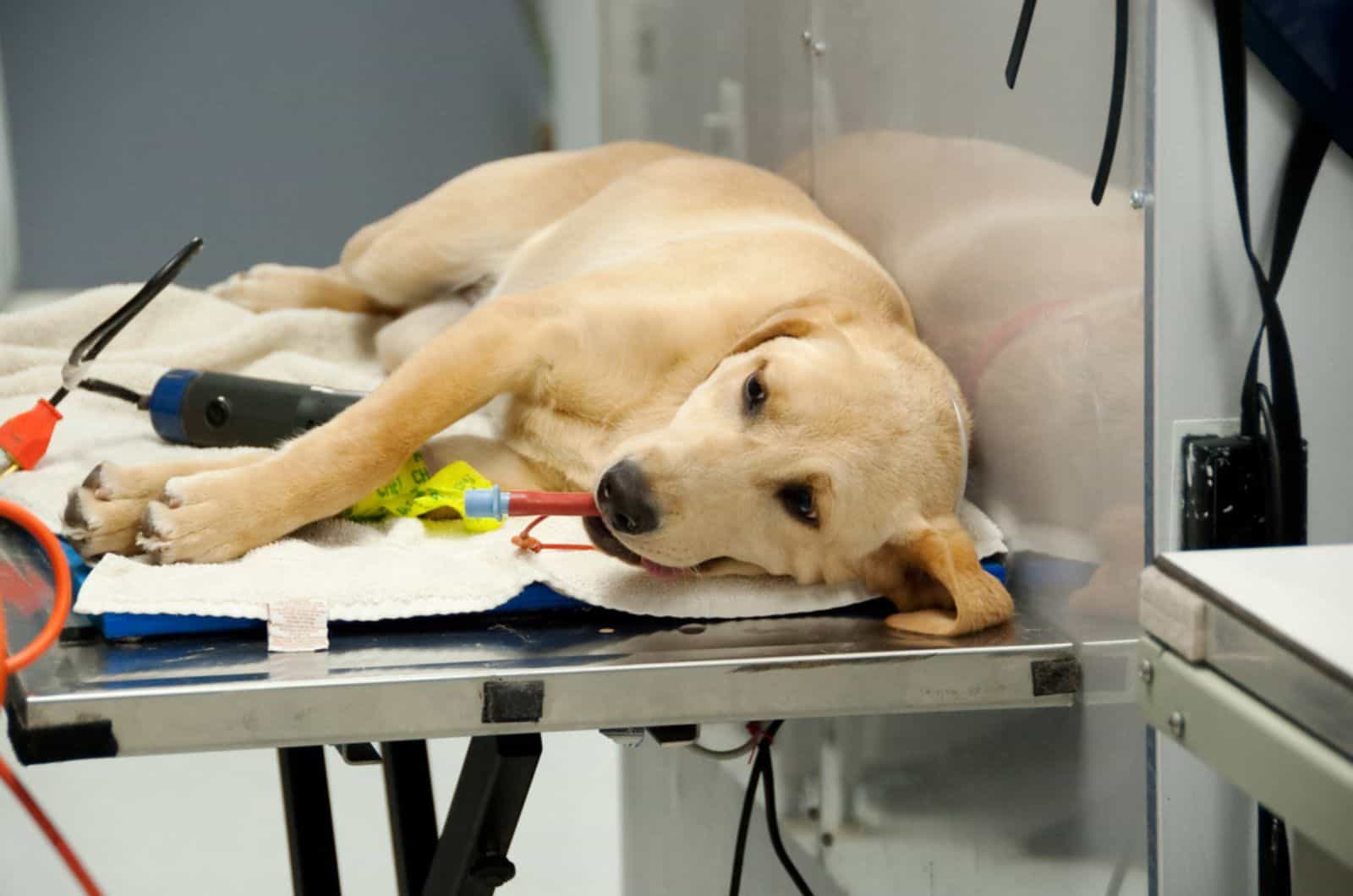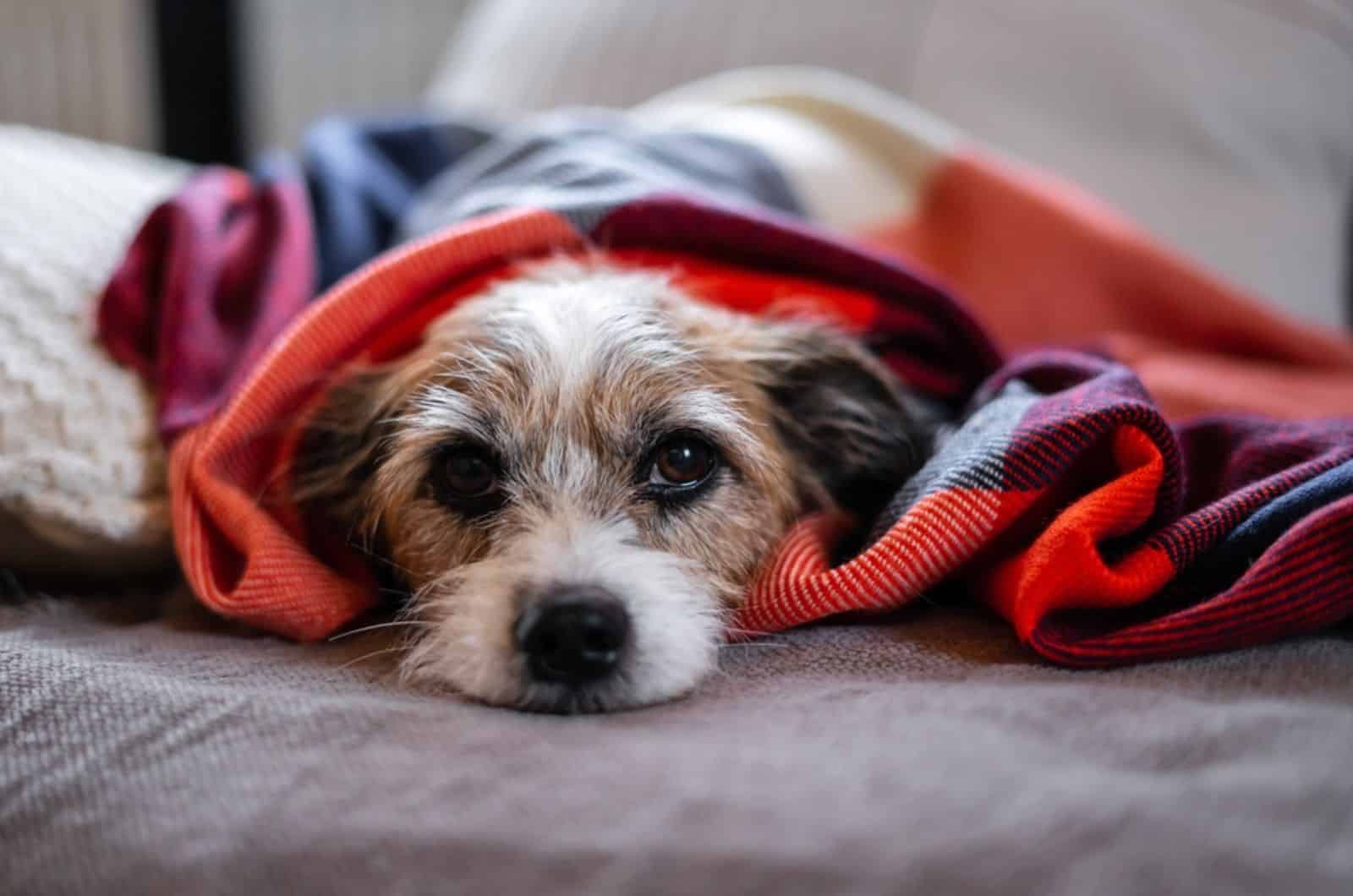Having a female dog spayed is such a stressful period for the majority of pet parents. Both spay and neuter surgery can get complicated if the post-operative care is not well provided. As responsible pet parents, we should all keep in mind that our worries do not end when the veterinarian is done with the spay/neuter surgery procedure.
After the spay procedure, the veterinarian should advise each pet parent about what a spay incision looks like, as well as alert pet parents about possible complications and what to do about them.
After your dog leaves the veterinary clinic, it is up to you to keep an eye on your dog’s spay incision site. The healing period is about to begin and you are not sure if your dog’s spay incision site is infected or healing healthy?
The infected dog spay incision healing process may take up weeks, but with the right knowledge, you will be able to make it in a few days.
Additionally, the infected dog spay incision healing process may require a re-check at your animal hospital. Learn more about how long it takes for your dog’s infected spay incision to heal and when to call the veterinarian!
How Do I Know If My Dog’s Spay Incision Is Infected?
A dog’s spay incision that is infected will probably be quite swollen and red. Additionally, you might see drainage from the area, including any blood or pus. It’s possible that the wound’s sutures are broken, and you might even see underlying tissue protruding from it.
Acute bruising, swelling, or redness at the site of the incision is also common. Pus or bleeding at the wound site longer than 24 hours after the procedure, and experiencing nausea or diarrhea are also common signs of infected spay incision.
Some dogs vomit yellow or brown immediately after which can be normal as a result of anesthesia.
What Are The Symptoms Of An Infected Spay Incision In Dogs?

There are several symptoms that your dog can show if it has its incision site infected. The symptoms can be mild or severe, depending on how strong the infection is.
Alongside local redness and swelling, the female dog can experience nausea and vomiting, due to pain. Additionally, dogs may have diarrhea but act fine, which can be misleading. But, more often than not, other signs such as high fever and lethargy are noticeable.
If the outer part of the incision site gets infected, then there is a chance of bacteria spreading inside the wound and getting into the dog’s abdomen. That’s the worst-case scenario.
Make sure that your female dog has received all necessary vaccinations prior to the spay procedure.
Redness
Redness or inflammation around and along the incision can be mild and severe, depending on the level of infection.
If it is mild, then the redness should slowly but surely get better on its own and go away — it’s completely normal. Call your vet if the redness spreads to other areas around the incision or if your dog develops pimple-like formations around the incision site.
Pus Or Drainage
An incision after spay surgery is a wound and it is going through its healing period. Every wound that is healing healthy can produce a clear or pink fluid — which is normal.
On the other side, an infected dog’s spay incision wound can produce a yellowish, bad-smelling fluid (pus). That is what we call wound drainage and it is one of the first signs that your female dog’s spay incision is infected.
Additionally, your female dog’s urine color may change during the first days after spay or neuter surgery (male dogs).
Bad Smell Coming From The Incision
Alongside pus, the bad smell is what always follows. This is because the pathogens have taken over healthy tissue and instead of odorless pink or clear fluid, smelly puss is coming out.
When we say pathogens we mean that the “bad” bacteria have colonized the wound and started producing the putrid wound smell that is often called “malodor”.
This kind of bad smell is worse than the dog’s bad breath smell!
High Fever
The presence of bacteria and infection = fever or high fever in dogs. This is both a good and a bad sign because a high fever means that the dog’s body is fighting against bacterial colonization.
So if you think that high fever in dogs could only be caused by viruses and common cases of flu, then keep in mind that an infected wound can cause havoc.
If you notice that your dog’s head is hot, then you should measure its body temperature and inform your veterinarian.
Hot To Touch
Redness, swelling, and HEAT!
The infected spay incision is going to be hot to touch, and you touching it may pose a higher risk of it getting more infected. Our hands are not clean all the time and if we don’t pay attention, we might cause our dog’s incision wound infection.
Typically, the infected incision site feels warmer than the rest of the body and it is always followed by redness. Pus and swelling may or may not be present.
This can also be the first sign of infection and it is recommended that you monitor your dog.
Pain Or Sore To Touch
I don’t think that your dog will let you touch its wound if it feels pain. Dogs can’t talk, right? And they can’t tell you where it hurts. But, by the looks of it, you can figure out that the infected incision site hurts quite a lot and your dog will not enjoy you touching it.
Dogs will whine or become nervous if you try to approach their infected incision. No wonder, I can’t even imagine how painful that is!
Moreover, your dog may start breathing fast and heavily due to excessive pain.
Swelling Or Hardening
This is what we often call “Seroma”. Seromas are those lumps we see when wounds are healing. They can be a part of normal healing, but they can also be present if your dog’s incision site is infected.
That said, swelling or hardening is not as dangerous as previously mentioned symptoms and may or may not pose a sign of infection.
If your dog’s spay incision is not inflamed and not tender, it is most likely a small area of fat necrosis. This means that some of the underlying fat did not survive and has turned into scar tissue. While this may be somewhat annoying and sometimes misleading to pet parents, it is not considered dangerous.
I recommend that you call your vet if you happen to notice those bumps around your dog’s spay incision so that you can get a better insight into what is going on.
How Do You Tell If A Dog Surgical Wound Is Infected Or Healing?
The surgical incision edges usually enlarge and turn red in the first several days following spay surgery.
There may be mild blood-tinged fluid leakage and bruising around the incision site. A small gap between the dog wound’s edges is acceptable because the edges won’t heal together.
When your female dog is standing and you notice that there is something dripping from the spay incision wound or that there is blood next to your dog, then you should call your vet. There may be a few broken sutures or your female dog’s spay incision wound is infected.
If you notice a wide gap and protruding tissue, you must call your vet as soon as possible!
What Do I Do If My Dog’s Spay Incision Is Infected?
During the spay recovery period, owners should monitor their female dog’s spay incision a few times each day, until it is completely healed.
If the surgical incision looks to have specific signs of infection like considerable swelling, is bright red, oozes fluid, has red pimples all around it, or opens back up, you should be concerned.
Call the veterinarian right away if the dog’s wound has reopened.
Your dog could attempt to lick the surgical site out of instinct in the first few days post-surgery. Similar to human wounds, a pet’s incision becomes itchy as it recovers. When dogs feel itchy, they lick or chew the area excessively.
The easiest approach to stop your dog from licking is to keep its cone on at all times. Call the veterinarian if the wound begins to seem or smell infected.
Before dressing it in gauze or a bandage, let the skin completely dry naturally. In most cases, it is unnecessary to cover minor cuts and scrapes.
How Long Should My Dog Wear An E-Collar?
The risk of the stitches coming out or the spay incision site becoming infected increases if your dog chews or licks extensively.
If your dog keeps licking the wound, you might need to buy an Elizabethan collar (e-collar) to stop the habit.
Ugh, e-collars are so uncomfortable and some pups are even afraid of them! But, your dog will have to endure this “torture” for its own good — between seven and ten days after surgery.
It is recommended that both female and male dogs wear cones after the spay or neuter surgery. Your veterinarian will tell you when is the right time to take the cone off of male or female dogs.
How Do You Prevent An Infected Spay Incision On A Dog?

Your pet should wear the recovery equipment provided by the veterinarian for the first 10 to 14 days after the spay surgery. To prevent your female dog from licking or chewing at the incision site, you should ask your vet for an e-collar or a dog onesie. If you can’t find a dog onesie, you can make one by using your own T-shirt!
Keep your pet calm for the first two weeks while the incision heals. That means no activity levels! Your dog needs to stay calm during the spay surgical incision aftercare to avoid developing infection and health issues.
Check Your Dog’s Spay Incision Regularly
It’s critical to check your dog’s incision regularly after surgery, we recommend twice a day. Re-check a bunch of times if you think that two is not enough — just don’t touch your dog’s incision site.
On the first day after your pet’s surgery, take note of the length of the scar, the number of stitches, and the appearance of the skin immediately after the surgical procedure. This way, you’ll have a good idea of what it should look like and will notice if anything starts to look off during recovery time.
Encourage them not to jump on or off furniture, and keep your dog on a leash when out for walks.
It is critical to keep the incision site dry. If your pet gets wet, gently pat the area when they come inside. For the first three to four weeks, avoid bathing or swimming with your pet.
Don’t Bathe Your Dog
I know it may sound silly, but water will only make things worse in this case. Especially if you use a dog shampoo that can irritate the delicate skin of the spay incision site. So, your dog that is going through its surgery recovery period is prohibited from bathing, and swimming in pools, lakes, rivers, and the sea.
After all, there is no way that your dog can get dirty or roll into something if it is laying low — remember, your dog should not be active during the recovery period. If your dog happens to get dirty, clean the dirty area with a damp towel or doggie-wet wipes.
At all costs avoid touching and cleaning the incision site with wipes, towels, q-tips, and cloths. The incision site should be cleaned with sterile gauze and a 0,9% sodium chloride solution.
How Do You Treat An Infected Spay Incision On A Dog?

Although it may be necessary to take antibiotics, many people find that simple Epsom salt soaks—applying warm, moist compresses to the affected area—work just as well. If the infection is very little and superficial, inquire with your veterinarian about this alternative.
By removing any dead or contaminated tissue from the incision, debride it.
Using salt water, rinse the wound (saline solution). If your dog develops an abscess, drain the pus-filled space or have your vet do it. Dress the wound in bandages and gauze that is soaked in saline.
Give your dog prescription pain medication and anti-inflammatories to lessen their discomfort and swelling.
For extremely active dogs, simple seromas behind sutures are typical. Although they nearly always go away on their own, be aware that you need to keep your pet less active than you have been in order to avoid any further fluid buildup, infection, or probable discomfort.
How Long Does It Take For A Spay Incision To Heal Without Infection?
The initial redness and bruising from an incision will fade after a few days.
An enormous, solid swelling may form around the wound in dogs that exhibit high activity levels during the recovery period. A hyperactive immune system in reaction to the dog’s activity is typically to blame for this.
Redness around the spay incision area, bleeding from the wound, broken or missing sutures, as well as pain when the incision area is touched and tissue protrusion calls for immediate vet care. Additionally, any unpleasant odor or discharge should prompt you to seek veterinary care.
Most spay incisions are sufficiently healed after the first week to allow the removal of the skin staples or sutures.
The spay incision should no longer be red — it should be pink color, the edges should be sealed together, and there should be no drainage or pain from the incision. Worried pet parents can now relax because they are largely over at this point.
Contact your veterinarian if however, the redness lasts, or if redness and swelling are visible around each suture, tissue is protruding, the wound is draining, or there is a space between the spay incision’s margins.
How Long Does It Take For A Dog Spay Incision To Heal?

Long story short — it takes up to a week or a week and a half for your dog’s spay incision to heal. To fully heal, it should take about two weeks. Of course, this is the timeframe in the best case — if the spay incision is not infected.
Neutered male dogs feel pain after the neutering procedure for about a week. Their female counterparts may require ten days on average.
When it comes to dog spay incision healing, aftercare is the most important part. This is why pet parents should monitor their dogs during the whole recovery period.
As we have said, dogs get nervous when they feel pain and discomfort, and this is why they start to lick their wounds in an attempt to clean them and take away the pain. You do not want your dog licking its incision wound!
The dog’s saliva is full of normal and pathogenic bacteria that can easily infect an incision that is in the healing process. Until the suture removal, pet parents must keep a close eye on what their dog is doing and how its incision site is looking.
Conclusion
The infected dog spay incision healing process is a whole time period that needs to be monitored always. Responsible pet parents work together with their veterinarians to notice signs of infection and treat them on time.
Even though your vet performs the cleanest surgery, bad aftercare can cause an infection of your dog’s spay incision. In other words, without a proper recovery period, your dog’s spay incision is not going to heal properly and it has the potential of causing major health issues.
Alongside e-collars and low activity levels, your dog may need pain medication or antibiotics if the wound is infected severely. But, you can not give your dog human pain medication or antibiotics on your own, you will have to contact your veterinarian and take your dog for a re-check.
The majority of animal hospitals that perform spay/neuter surgeries offer free re-check for worried pet parents, so you don’t have to worry about further expenses.
Related Content
Dog Tongue Color Chart: What Color Is A Sign Of A Healthy Dog?
What To Do If You Find A Dried Dead Tick On Dog
14 Home Remedies For Dog Scooting













